#Automated Warehouse Robots
Explore tagged Tumblr posts
Text
Why Every Business Should Consider Warehouse Automation System Setup in 2025
In 2025, efficiency isn’t just an advantage—it’s a necessity. That’s why Warehouse Automation System Setup is becoming a must-have for businesses aiming to scale, reduce errors, and stay competitive. From e-commerce giants to mid-size distributors, automation is revolutionizing how goods move through the supply chain.
Automated Warehouse Systems enable 24/7 operations, eliminate manual data entry, and increase order accuracy. Powered by smart Warehouse Robotics, businesses can now process higher volumes without increasing labor costs. The integration of Warehouse Management Software allows for real-time tracking, smarter routing, and better forecasting.
At the core of it all is Automated Inventory Management—a game-changer that minimizes stockouts, overstocking, and inventory discrepancies. With a smart setup, you gain full control over your inventory while enhancing speed and customer satisfaction.
Businesses working with experts like VNC Global are seeing dramatic improvements in fulfillment, efficiency, and cost control. In short: automation isn’t the future—it’s the present.
Ready to modernize your warehouse? Don’t get left behind. Consider implementing a Warehouse Automation System Setup and stay ahead in 2025 and beyond.
#automation #warehouse #supplychain #vncglobal #efficiency


#Warehouse Automation System Setup#Automated Warehouse Systems#Warehouse Management Software#Warehouse Robotics#Automated Inventory Management
1 note
·
View note
Text
What are the latest warehouse automation technologies?
Gone are the days of manual labour and static, inefficient operations. Today, we stand at the forefront of a revolution driven by the latest warehouse automation technologies. These innovations reshape how businesses handle inventory, fulfil orders, and optimize supply chains.
From autonomous robots and artificial intelligence to the Internet of Things (IoT) and advanced data analytics, we'll explore how these technologies enhance efficiency, reduce costs, and ensure seamless operations in modern warehouses.
1-Robotic Process Automation (RPA): RPA involves using software robots to automate repetitive tasks like data entry, order processing, and inventory tracking. The robots interact with various systems and applications to streamline workflows.
2-Autonomous Mobile Robots (AMRs): Robotic vehicles called AMRs navigate and operate in warehouses without fixed infrastructure, such as conveyor belts or tracks. They perform tasks like picking, packing, and transporting goods.
3-Automated Guided Vehicles (AGVs): AGVs are similar to AMRs but typically follow fixed paths or routes guided by physical markers or magnetic tape. They are commonly used for material transport in warehouses and distribution centres.
4-Goods-to-Person Systems: This approach involves bringing the items to the workers rather than having workers travel throughout the warehouse to pick items. Automated systems retrieve and deliver goods to a workstation, reducing walking time and improving efficiency.
5-Automated Storage and Retrieval Systems (AS/RS): AS/RS systems use robotics to store and retrieve items from racks or shelves automatically. These systems can significantly increase storage density and optimize space utilization.
6-Collaborative Robots (Cobots): Cobots are designed to work alongside human workers. They can assist with tasks like picking, packing and sorting, enhancing efficiency and safety.
7-Warehouse Management Systems (WMS): While not a physical automation technology, modern WMS software uses advanced algorithms and AI to optimize inventory management, order fulfilment, and warehouse processes.
8-Vision Systems and Machine Learning: Computer vision technology combined with machine learning can be utilized for tasks such as object recognition, inventory movement tracking, and quality control.
9-IoT and Sensor Networks: Internet of Things (IoT) devices and sensors collect real-time data on inventory levels, environmental conditions, equipment health, and more, enabling better decision-making and predictive maintenance.
10-Voice and Wearable Technologies: Wearable devices and voice-guided picking systems can provide workers with real-time information and instructions, improving accuracy and efficiency.11-Automated Packaging Solutions: These systems automate the packaging process by selecting the appropriate box size, sealing packages, and applying labels, reducing manual labour and ensuring consistent packaging quality.
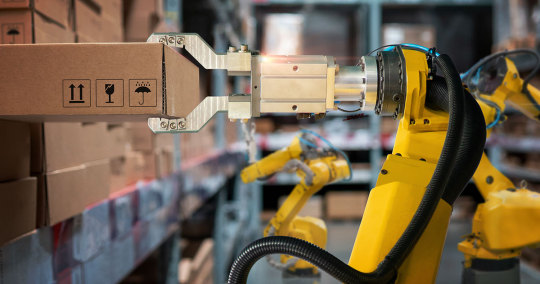
1 note
·
View note
Text
Dark Warehouses & Lights‑Out Logistics: The Automated Future Unveiled
Explore how dark warehouses and lights‑out logistics are reshaping supply chains through full automation for faster, safer, and cost‑effective operations.
0 notes
Text
The Role of IoT in Connected Warehouse Systems
Internet of Things (IoT) devices have revolutionized warehouse monitoring. Smart sensors now track inventory levels, equipment health, temperature conditions, and even worker safety in real time. With centralized dashboards, managers can quickly make informed decisions. This level of automation improves transparency, reduces downtime, and enhances overall operational control. IoT is enabling connected warehouses where every asset, shelf, and pallet can talk—and the system listens.
0 notes
Text
Meet Your Warehouse’s Best Friend: The Agile AMR Robot
These days, warehouses are vibrant, dynamic spaces that require more accuracy and speed than ever before. And in the middle of this change? The Autonomous Mobile Robot, or AMR robot, is a surprisingly useful, clever, and nimble piece of warehouse handling equipment.
With the aid of sensors and intelligent mapping software, an AMR robot navigates aisles with ease rather than on fixed tracks. It can deliver parts, move totes, and pick up pallets without human supervision. This translates into a smoother flow of commodities, fewer bottlenecks, and less manual labour. Additionally, your staff may concentrate on strategy, quality assurance, or customer service areas where human brains still outperform machines when they are not burdened with tedious carrying duties.
Warehouses are falling in love with autonomous mobile robots for the following reasons:
Powerful plug-and-play: Do you need a robot or a different route? AMRs adapt without infrastructure changes, therefore there is no issue.
Team-centric design: AMRs, as opposed to conventional forklifts or conveyor spools, are made to collaborate with people, which improves morale and safety.
As your business expands, you can start with one and grow it to a fleet while maintaining central software coordination.
Data-first execution: You gain a data-driven advantage with every run, which produces real-time insights from journey times to path optimisation.
Cost-efficient outcomes: Reduced damage, fewer stoppages, and steady speed help companies achieve more dependable throughput and a quicker return on investment.
Additionally, manufacturers, clinics, and airports are all seeing the same benefits from AMR systems, so it's not just warehouses. AMR robots are the unsung heroes who carry out the heavy lifting (literally) because they are intelligent, flexible, and infinitely expandable.
To put it briefly, the AMR robot is the intelligent, amiable, and always available warehouse handling equipment of the future. Is your operation prepared to welcome this robotic teammate? Efficiency never seemed so practical.
0 notes
Text
Warehouse Robotics Market Size, Share, Industry Trends 2032
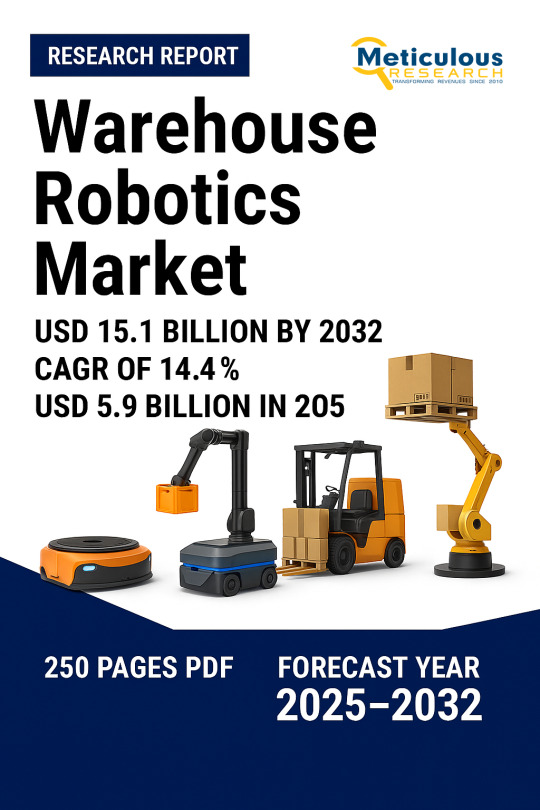
Meticulous Research®, a leading global market research company, published a report titled ‘Warehouse Robotics Market—Global Opportunity Analysis and Industry Forecast (2025-2032)’. According to this latest publication, the warehouse robotics market is expected to reach $15.1 billion by 2032, at a CAGR of 14.4% from 2025 to 2032.
The growth of the warehouse robotics market is primarily driven by an increasing focus on optimizing warehouse operations for faster product delivery, the rising use of autonomous mobile robots, and the growing popularity of e-commerce shopping platforms. However, the high costs associated with warehouse setup and infrastructure development could constrain the market's growth.
Additionally, rapid advancements in robotics, AI, and machine learning technologies are expected to create significant growth opportunities for players in this market. However, the security risks associated with connected autonomous robots present challenges that could impact the growth of the warehouse robotics market.
The warehouse robotics market is segmented by product type, function, payload capacity, and end user. The report evaluates industry competitors and analyzes the market at the regional and country levels.
Among the product types studied in this report, the autonomous mobile robots segment is anticipated to hold the dominant position, with over 29% of the market share in 2025. The segment's dominance is driven by the rising demand for warehouse automation, the exponential growth of the e-commerce industry, and the increasing need for high-efficiency autonomous mobile robots to enhance industrial productivity. Additionally, the demand for customized AMRs designed to meet specific industry requirements, such as handling fragile goods, further contributes to this segment's dominance.
Among the functions studied in this report, the picking and placing segment is anticipated to hold the dominant position, with over 34% of the market share in 2025. The segment's dominance is attributed to the increasing need to optimize the picking process and maximize overall throughput in warehouses and distribution centers. Additionally, the growing emphasis on accurate inventory tracking, efficient replenishment, and timely reordering to prevent stockouts and backorders plays a significant role in this large market share.
Among the payload capacities studied in this report, the Below 20 Kg segment is anticipated to hold the dominant position, with over 26% of the market share in 2025. The segment's dominance is driven by the increased adoption of lower payload capacity robots in the consumer electronics and food and beverage industries, along with the rising popularity of e-commerce shopping. Additionally, the growing volume of lightweight and small packages that need to be managed in distribution centers further contributes to this large market share.
Among the end users studied in this report, the retail & e-commerce segment is anticipated to hold the dominant position, with over 22% of the market share in 2025. The segment's dominance is attributed to the increasing preference for online shopping, a growing demand for fast and efficient order fulfillment, and the need to enhance picking speed and order accuracy.
Among the geographies studied in this report, Asia-Pacific is anticipated to hold the dominant position, with over 52.7% of the market share in 2025. The presence of major warehouse robotics players, such as Daifuku Co., Ltd. (Japan), FANUC Corporation (Japan), Hikrobot Co., Ltd. (China), and Omron Corporation (Japan), is anticipated to significantly contribute to the high revenue share of this region. Additionally, the surge in e-commerce, an increased focus on optimizing warehouse operations for faster product delivery, technological advancements, and the growing adoption of warehouse robotics in the semiconductor, electronics, and automotive sectors are key factors driving the region's dominance.
Key Players
Some of the major players studied in this report are Daifuku Co., Ltd. (Japan), KUKA AG (Germany), ABB Ltd. (Switzerland), FUNUC Corporation (Japan), Toyota Material Handling India Pvt. Ltd.(India), Omron Corporation (Japan), Honeywell International Inc. (U.S.), Yaskawa Electric Corporation (Japan), Onward Robotics (U.S.), Zebra Technologies Corporation (U.S.), Hikrobot Co., Ltd. (China), SSI SCHÄFER - Fritz Schäfer GmbH (Germany), Onward Robotics (U.S.), TGW Logistics Group (Austria), and Addverb Technologies Limited. (India).
Download Sample Report Here @ https://www.meticulousresearch.com/download-sample-report/cp_id=6027
Key Questions Answered in the Report-
What is the value of revenue generated by the sale of warehouse robotics?
At what rate is the global demand for warehouse robotics projected to grow for the next five to seven years?
What is the historical market size and growth rate for the warehouse robotics market?
What are the major factors impacting the growth of this market at global and regional levels?
What are the major opportunities for existing players and new entrants in the market?
Which product type, function, payload capacity, and end user segments create major traction in this market?
What are the key geographical trends in this market? Which regions/countries are expected to offer significant growth opportunities for the manufacturers operating in the warehouse robotics market?
Who are the major players in the warehouse robotics market? What are their specific product offerings in this market?
What recent developments have taken place in the warehouse robotics market? What impact have these strategic developments created on the market?
Contact Us: Meticulous Research® Email- [email protected] Contact Sales- +1-646-781-8004 Connect with us on LinkedIn- https://www.linkedin.com/company/meticulous-research
#Warehouse Robotics#Autonomous Mobile Robots#Automated Guided Vehicles#Articulated Robots#Collaborative Robots#SCARA Robots#Warehouse Robotics Market
0 notes
Text
How Warp is introducing robots to automate its community of warehouses
Warp was based in 2021 to assist corporations streamline their delivery provide chains and cut back prices via its tech-enabled community of shippers, carriers and warehouses. Now, it needs to make provide chains additional environment friendly through the use of robots to automate its internet of warehouses. Daniel Sokolovsky, the co-founder and CEO of Warp, instructed TechCrunch that Warp is…
0 notes
Text
Manual Testing vs Automation Testing: A Full Comparison
Manual Testing vs Automation Testing is a debate every QA team faces. Both approaches have unique advantages, and the choice depends on project needs, timelines, and resources.
Manual testing involves human testers executing test cases without the use of scripts. It’s ideal for exploratory, usability, and ad-hoc testing, where human intuition and observation play a major role. Manual testing is also more adaptable during frequent UI changes and is cost-effective for short-term projects.
On the other hand, automation testing uses tools and scripts to run tests automatically. It shines in regression, performance, and load QA testing services, where speed, repeatability, and accuracy are crucial. While initial setup can be time-consuming and expensive, automation delivers long-term ROI for large-scale or continuous testing.
However, automation cannot completely replace the human touch required for complex test scenarios, subjective validation, or UI/UX assessments.
In summary, manual testing provides flexibility and context-driven insight, while automation offers efficiency and scalability. A well-balanced QA strategy leverages both to deliver high-quality software faster and more reliably.
#qa testing services#qa testing company#qa testing software#software testing strategies#warehouse automation robots#automation tools#performance testing tools#test management tool
0 notes
Text
Global Shutter USB Cameras: A Game-Changer for Robotic Arm Accuracy in Warehouses

In the ever-evolving landscape of warehouse automation, precision and efficiency are paramount. Enter the global shutter USB camera, a technology that is revolutionizing the capabilities of robotic arms. Unlike traditional cameras, global shutter USB cameras capture images without distortion, making them ideal for high-speed operations where accuracy is critical. As warehouses strive to enhance productivity and streamline operations, understanding the role of these advanced cameras is essential.
The Benefits of Global Shutter USB Cameras for Robotic Arms
Enhanced Image Quality for Accurate Object Recognition
Global shutter USB cameras provide unparalleled image quality, crucial for robotic arms tasked with object recognition and manipulation. Traditional rolling shutter cameras can cause motion blur, leading to misidentification of objects. In contrast, global shutter cameras capture each frame simultaneously, ensuring clarity and detail. This capability allows robotic arms to accurately identify, pick, and place items, reducing errors and improving overall workflow efficiency.
Real-Time Processing and Response
One of the standout features of global shutter USB cameras is their ability to facilitate real-time image processing. With their rapid capture rates, these cameras enable robotic arms to process visual information almost instantaneously. This capability is vital in fast-paced warehouse environments, where split-second decisions can impact productivity. For instance, if a robotic arm detects an obstacle or a misplaced item, it can quickly adjust its actions, minimizing downtime and maintaining a seamless operation.
Improved depth perception for complex tasks
Depth perception is essential for robotic arms performing intricate tasks, such as stacking boxes or assembling products. Global shutter USB cameras offer superior depth information due to their precise image capture capabilities. By providing clear, undistorted images, these cameras enable robotic systems to gauge distances accurately, ensuring that arms can execute complex maneuvers safely and efficiently. This advancement not only enhances productivity but also reduces the risk of accidents in busy warehouse settings.
Global Shutter USB Cameras and Increased Safety Measures
Minimizing collision risks
Safety is a top priority in any warehouse, especially when robotic arms are in operation. The use of global shutter USB cameras contributes significantly to minimizing collision risks. With their ability to capture high-quality images rapidly, these cameras can detect potential hazards in real time. Robotic arms equipped with global shutter cameras can react swiftly to obstacles, preventing accidents and ensuring a safer working environment for all.
Facilitating Advanced Safety Protocols
Integrating global shutter USB cameras into robotic systems also enables the implementation of advanced safety protocols. These cameras can work alongside other sensors, such as LIDAR and infrared, to create a comprehensive safety network. This synergy allows for more robust monitoring and control of robotic movements, ensuring compliance with safety standards and protecting warehouse personnel from accidents.
Global Shutter USB Cameras: A Future of Precision in Robotics
Versatility in Application
Global shutter USB cameras are not only limited to robotic arms; their versatility extends across various warehouse applications. From quality control inspections to inventory management, these cameras enhance the functionality of automated systems. By providing precise visual data, global shutter cameras support various operational needs, making them indispensable tools in modern warehouses.
A Step Towards Full Automation
As warehouses increasingly adopt automation technologies, global shutter USB cameras play a crucial role in the journey toward fully automated operations. With their ability to deliver real-time, high-quality images, these cameras enable robotic systems to work autonomously with greater accuracy. This capability sets the stage for a future where warehouses can operate with minimal human intervention, significantly increasing efficiency and productivity.
Are you ready to elevate your warehouse operations with cutting-edge technology? Explore how global shutter USB cameras can transform your robotic systems for enhanced accuracy and efficiency. Contact us today for more information on integrating these game-changing cameras into your automation solutions, or subscribe to our newsletter for the latest insights and updates in warehouse robotics technology!
0 notes
Text
Automation-x
Numerous sectors rely on Automation-X, Inc. for excellent products and solutions when it comes to industrial automation. Among the various services we provide are off-grid power solutions, instrumentation outfitting, and designs for RTU and PLC panels.
#Special Machinery Industry India#Automation-x India#Warehouse Automation India#Factory Automation Pune#Industrial Automation Control India#Process Automation Robotics India#Industrial Automation Siemens#Industrial Automation Industry Pune#Robotics
0 notes
Link
OSARO employs a diverse & talented team of experts in the specialized field of machine and deep learning (Software Development).
#fulfillment #robotics #logistics #ecommerce #warehouse #kitting #etail #pickandplace #automation @OsaroAI
0 notes
Text
Navigating the Future: Advancements in Warehouse Robotics Technology
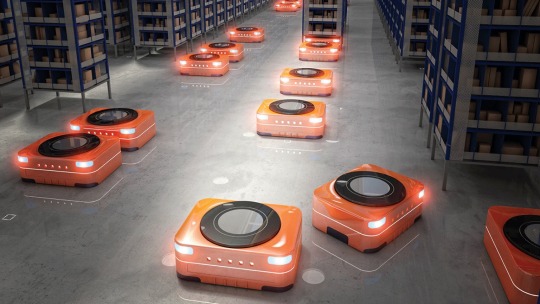
As we look to the future of logistics and supply chain management, one technology stands out as a driving force behind innovation and efficiency: warehouse robotics. Rapid advancements in robotics technology are reshaping the way warehouses operate, offering unprecedented levels of automation, precision, and scalability.
Exploring the Latest Advancements:
Enhanced Mobility and Flexibility: The latest advancements in Warehouse Robotics technology are focused on enhancing mobility and flexibility. Robots are becoming more agile and adaptable, capable of navigating complex warehouse environments with ease. This increased mobility allows for greater flexibility in warehouse layout and optimization of space.
Integration of Artificial Intelligence: Artificial intelligence (AI) is playing a crucial role in the evolution of warehouse robotics. AI-powered robots can analyze vast amounts of data in real-time, allowing them to make intelligent decisions and adapt to changing circumstances on the fly. This level of autonomy and decision-making capability is revolutionizing warehouse operations.
Embracing Collaborative Robotics:
Collaborative Robots (Cobots): Collaborative robots, or cobots, are another exciting development in warehouse robotics technology. Unlike traditional industrial robots, cobots are designed to work alongside human workers, enhancing efficiency and safety in the warehouse environment. These robots can perform tasks that require dexterity and precision, while humans focus on more complex operations.
Human-Robot Collaboration: The integration of cobots into warehouse workflows enables seamless human-robot collaboration. By working together, humans and robots can leverage their respective strengths to optimize productivity and achieve higher levels of efficiency. This collaborative approach to warehouse robotics ensures a smooth transition towards fully automated warehouse operations.
Get More Insights On This Topic: Warehouse Robotics
#Warehouse Robotics#Automation#Robotics Technology#Supply Chain Efficiency#Logistics Automation#Robotic Automation#Warehouse Management#Industrial Robotics
0 notes
Text
#warehouseautomation#wms#automation#warehousemanagement#inventorymanagment#erpsoftware#warehouse#ai#software#cloud#inventorymanagementsoftware#erpsystem#stockmanagement#supplychain#management#industry#warehousing#business#robotics#sales#team#manufacturing#digital#multichannel#automationengineering#demo#help#technology#robot#robots
1 note
·
View note
Text
Meet the AMR Robot: The Smart Teammate Revolutionizing Warehouses
In today’s hyperconnected, fast-paced world of e-commerce and just-in-time manufacturing, warehouses have evolved into strategic nerve centers. No longer just spaces to stash goods, they’re critical hubs that can make or break a business’s ability to deliver quickly, efficiently, and profitably. At the heart of this warehouse revolution stands a sleek, smart, and tireless teammate: the AMR robot, or Autonomous Mobile Robot.
The Rise of the AMR
Gone are the days of bulky machines tied to rails or conveyor belts. Today’s AMRs are nimble, autonomous, and surprisingly intelligent. Using a mix of advanced sensors, real-time mapping, and onboard AI, these robots can independently navigate complex warehouse layouts. They can identify and avoid obstacles, reroute in case of congestion, and reach their destinations without needing fixed paths or constant human intervention.
Think of them as the self-driving cars of the warehouse world—only quieter, more efficient, and trained to never break the speed limit.
A New Age of Warehouse Handling Equipment
When it comes to warehouse handling equipment, the AMR robot is a category-defining marvel. Traditionally, equipment like forklifts, conveyor systems, and pallet jacks required skilled operators and constant supervision. That meant higher labor costs, increased chances of human error, and limitations in scaling during peak demand seasons.
Enter the Autonomous Mobile Robot—a compact, battery-powered solution that works 24/7 without fatigue. Whether it’s moving raw materials to production lines, picking customer orders from shelves, or transporting finished goods to loading docks, AMRs handle it all with unshakable precision.
The result? Fewer mistakes, faster cycle times, and more efficient warehouse operations.
A Teammate, Not a Replacement
A big concern with automation has always been the fear of replacing human workers. But the beauty of AMRs lies in their collaborative nature. These robots are designed to work alongside people, not in place of them. While the AMR robot tackles repetitive, physically taxing, and time-consuming tasks, human workers can focus on strategic responsibilities—like quality control, equipment maintenance, or optimizing processes.
This collaboration between humans and machines boosts morale at work in addition to productivity. No more exhausting journeys via enormous warehouses or back-breaking lifting. Workers instead take on the role of overseers of efficiency and operators of intelligent systems.
The reasons everyone is discussing AMRs
AMRs are receiving a lot of attention in the industrial and logistics industries for a reason. They are enticing to contemporary businesses because of the following main advantages:
Adaptability: AMRs are easily reconfigurable, in contrast to typical automation systems that need established infrastructure. With minimal downtime, you may scale operations, modify workflows, and adjust to new layouts.
Rapid Deployment: Since AMRs are not reliant on predetermined routes or tracks, they may be deployed rapidly. This is very helpful for businesses that are seasonal or growing rapidly.
Smart Navigation: AMRs navigate through dynamic environments, including those shared with people and forklifts, with confidence by utilising technology such as LiDAR, SLAM (Simultaneous Localisation and Mapping), and obstacle recognition.
Data-Driven Operations: AMRs produce a lot of data, including route efficiency and journey times. This knowledge can enhance overall operational effectiveness and optimize warehouse layouts.
Safety First: With sensors and integrated safety procedures, AMRs lower the possibility of mishaps, making them a reliable component of contemporary warehouse handling machinery.
Not only for storage facilities
Autonomous Mobile Robots are becoming more and more popular in a wide range of other settings, even though they excel in warehouses. They deliver lab samples and medications to hospitals. They manage security and baggage at airports. They oversee the replenishment of goods in shop backrooms. Because of their versatility, they can be used in any facility that has to move items precisely and repeatedly.
Bottom-Line Enhancers
Although the technology is impressive, what about the ROI?
AMRs save money over time in a number of ways. They minimise downtime from fatigue or absence and reduce workforce expenses by minimising reliance on human labour. Their accuracy reduces order errors and product damage. Additionally, businesses benefit from improved service levels and quicker turnaround times due to their ability to work continuously.
Determine the difference between AMR and AGV
AMRs and AGVs (Automated Guided Vehicles) are frequently confused in the automation field. Although they are both utilised for material transportation, their navigational strategies differ significantly.
AGVs are dependent on fixed pathways, such as implanted wires, magnetic strips, or QR codes. They halt and wait for anything to move out of their way. AMRs, however, are more intelligent. They avoid obstacles, adjust to shifting conditions, and plot routes dynamically using onboard intelligence.
Because they offer flexibility and scalability that conventional automated guided vehicles just cannot, AMRs are sometimes regarded as the next generation of AGVs.
What will happen to AMRs next?
The capabilities of the AMR robot will advance in tandem with advancements in robotics, artificial intelligence, and warehouse management systems. Better object detection, collaborative arms for choosing, and even machine learning-based route optimisation are possible features of future versions.
And we may anticipate seeing these robots in mid-sized and even small businesses, not just the major players, as they become more widely available and reasonably priced.
It could be time to consider when, rather than if, you will implement AMRs if you work in manufacturing, logistics, or any other industry that requires moving materials. Because neither your customers nor the future are waiting.
0 notes
Text
Sức mạnh tự động hóa trong quản lý kho hàng
SỨC MẠNH CỦA TỰ ĐỘNG HÓA TRONG QUẢN LÝ KHO HÀNG
Để vượt qua các thách thức của tự động hóa, các doanh nghiệp cần một đối tác có kinh nghiệm, giúp thiết kế và biến đổi hoạt động logistics. Thông qua phần mềm, phần cứng và tư vấn phù hợp, các công ty có thể duy trì hiệu quả và độ tin cậy trong chuỗi cung ứng của họ.
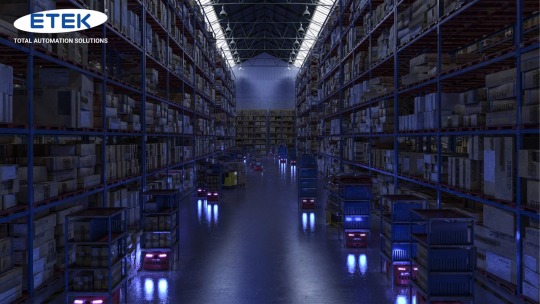
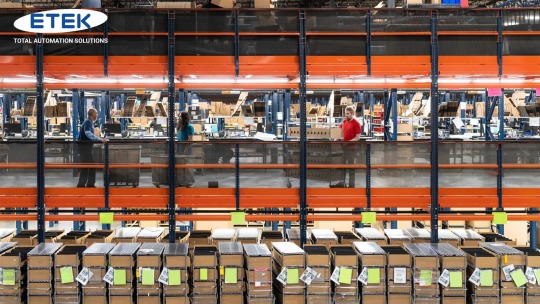
0 notes